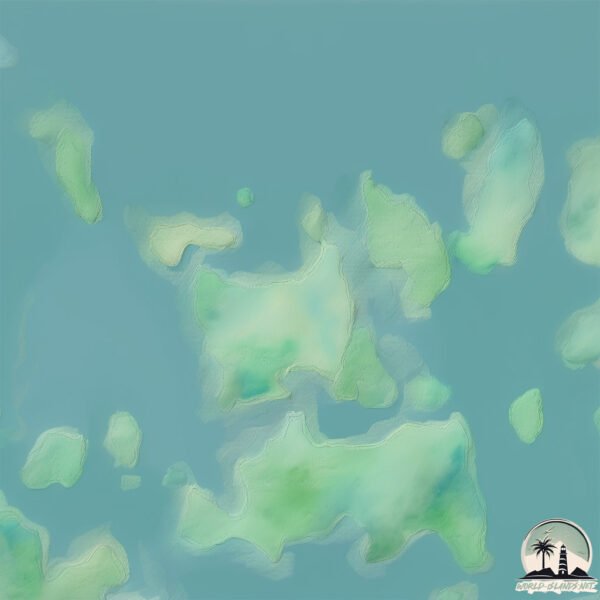Hòn Vụng Ba Cửa

Welcome to Hòn Vụng Ba Cửa, a Temperate island in the South China Sea, part of the majestic Pacific Ocean. This guide offers a comprehensive overview of what makes Hòn Vụng Ba Cửa unique – from its geography and climate to its population, infrastructure, and beyond. Dive into the details:
- Geography and Size: Explore the island’s size and location.
- Climate and Weather: Weather patterns and temperature.
- Topography and Nature: Uncover the natural wonders of the island.
- Infrastructure and Travelling: Insights on reaching, staying, and making the most of your visit.
- News and Headlines: Latest News.
Geography and size of Hòn Vụng Ba Cửa
Size: 0.911 km²
Coastline: 8.3 km
Ocean: Pacific Ocean
Sea: South China Sea
Continent: Asia
Hòn Vụng Ba Cửa is a Tiny Island spanning 0.911 km² with a coastline of 8.3 km.
Archipel: –
Tectonic Plate: Eurasia – One of the world’s largest tectonic plates, the Eurasian Plate covers a significant portion of Europe and Asia. It’s characterized by diverse geological features, including the Ural Mountains, the European Plain, and the Himalayas formed from its collision with the Indian Plate.
The geographic heart of the island is pinpointed at these coordinates:
Latitude: 20.88434588 / Longitude: 106.98634242
Climate and weather of Hòn Vụng Ba Cửa
Climate Zone: Temperate
Climate Details: Monsoon-Influenced Humid Subtropical Climate
Temperature: Hot Summer
Climate Characteristics: Known for hot, humid summers with significant monsoon rains, contrasted by mild, drier winters.
Topography and nature of Hòn Vụng Ba Cửa
Timezone: UTC+07:00
Timezone places: Asia/Jakarta
Max. Elevation: 2 m
Mean Elevation: 1 m
Vegetation: Evergreen Needleleaf Forest
Tree Coverage: 8%
The mean elevation is 1 m. The highest elevation on the island reaches approximately 2 meters above sea level. The island is characterized by Plains: Flat, low-lying lands characterized by a maximum elevation of up to 200 meters. On islands, plains are typically coastal lowlands or central flat areas.
Dominating Vegetation: Evergreen Needleleaf Forest
Dominated by evergreen coniferous trees such as pines and firs, which retain their needle-like leaves throughout the year. These forests are often found in cooler climates. Hòn Vụng Ba Cửa has a tree cover of 8 %.
Vegetation: 2 vegetation zones – Low Diversity Island
Islands with two distinct vegetation zones offer slightly more ecological variety. These zones could be due to differences in elevation, moisture, or other environmental factors. While still limited in biodiversity, these islands may offer a contrast between the two zones, such as a coastline with mangroves and an inland area with grassland.
Infrastructure and Travelling to Hòn Vụng Ba Cửa
Does the island have a public airport? no.
There is no public and scheduled airport on Hòn Vụng Ba Cửa. The nearest airport is Cat Bi International Airport, located 29 km away.
Does the island have a major port? no.
There are no major ports on Hòn Vụng Ba Cửa. The closest major port is HON GAI, approximately 11 km away.
The mean population of Hòn Vụng Ba Cửa is 977 per km². Hòn Vụng Ba Cửa is Densely Populated. The island belongs to Vietnam.
Continuing your journey, Nui Kak Ba is the next notable island, situated merely km away.
[Review Phim] Nhóm Du Khách Vô Tình Khám Phá Ra Thiên Đường Trên Một Hòn Đảo Biệt Lập
![[Review Phim] Nhóm Du Khách Vô Tình Khám Phá Ra Thiên Đường Trên Một Hòn Đảo Biệt Lập](https://i.ytimg.com/vi/jHYJIU06Zn0/mqdefault.jpg)


Vietnam is classified as Emerging region: G20: Group of Twenty – Major economies comprising both developed and emerging countries, representing the world’s largest economies. The level of income is Lower middle income.
News – Latest Updates and Headlines from Hòn Vụng Ba Cửa
Stay informed with the most recent news and important headlines from Hòn Vụng Ba Cửa. Here’s a roundup of the latest developments.
Please note: The data used here has been primarily extracted from satellite readings. Deviations from exact values may occur, particularly regarding the height of elevations and population density. Land area and coastline measurements refer to average values at mean high tide.
